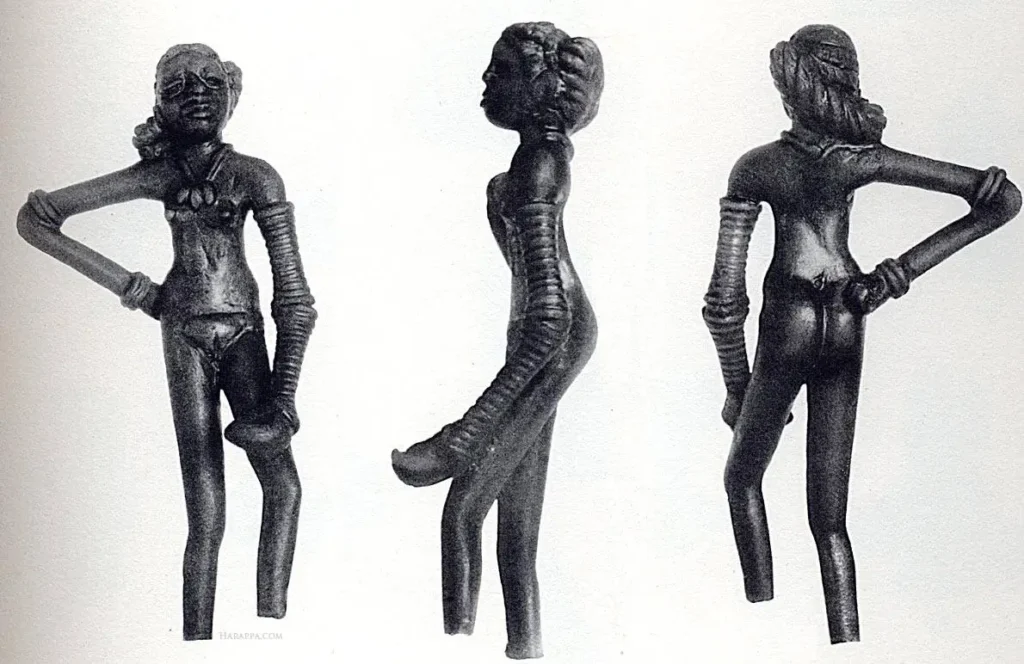Female figurine known as ‘Dancing Girl’, found at Mohenjodaro
Previous Year Questions: This question has been asked in the UPSC Civil Services Exam 2025 – Prelims – General Studies Paper I, held on Sunday, 25 May 2025.
Question: The famous female figurine known as ‘Dancing Girl’, found at Mohenjo-daro, is made of
(a) carnelian
(b) clay
(c) bronze
(d) gold
प्रश्न: मोहनजोदड़ो से प्राप्त ‘नाचती हुई लड़की (डांसिंग गर्ल)’ नामक प्रख्यात नारी लघुमूर्ति किस पदार्थ की बनी है?
(a) इन्द्रगोप मणि (कार्नेलियन)
(b) मृतिका (क्ले)
(c) कांस्य
(d) स्वर्ण
Topic: Ancient Indian History: Indus Valley Civilization
Explanation:
The Dancing Girl is a celebrated artifact from the ancient Indus Valley Civilization, specifically unearthed at the archaeological site of Mohenjo-daro, located in present-day Pakistan. Estimated to date back to approximately 2300–1750 BCE, this small yet significant bronze sculpture offers a remarkable glimpse into the artistic achievements of one of the world’s earliest urban cultures. British archaeologist Ernest Mackay discovered the figurine in 1926 during excavations at the site.

Image source: harappa.com
Please note that Bronze is primarily an alloy of copper and tin. It’s a homogenous mixture, meaning it’s the same throughout, and typically consists of about 88% copper and 12% tin. The tin adds strength and other desirable properties to the copper.
Standing at just 10.8 centimeters tall, the sculpture portrays a young female figure captured in a confident and animated posture. With her right hand resting on her hip and her left arm extended downward, she exudes a sense of poise and movement that suggests familiarity with dance or performance. The figure is adorned with a choker-style necklace and an array of bangles stacked along both arms, indicating a sense of personal adornment and perhaps societal status.
What sets the Dancing Girl apart is not just its aesthetic appeal, but the sophisticated technique used in its creation. Crafted through the lost-wax casting method—a process involving the creation of a wax model covered in clay, which is then heated to melt away the wax and replaced with molten metal—the statuette exemplifies the high level of metallurgical and artistic skill present in the Indus Valley Civilization.
Now housed in the National Museum in New Delhi, the Dancing Girl continues to be a subject of fascination for historians, archaeologists, and art enthusiasts. It stands as a powerful testament to the creativity, technical ability, and cultural richness of an ancient society whose legacy still influences the understanding of South Asian history today.










